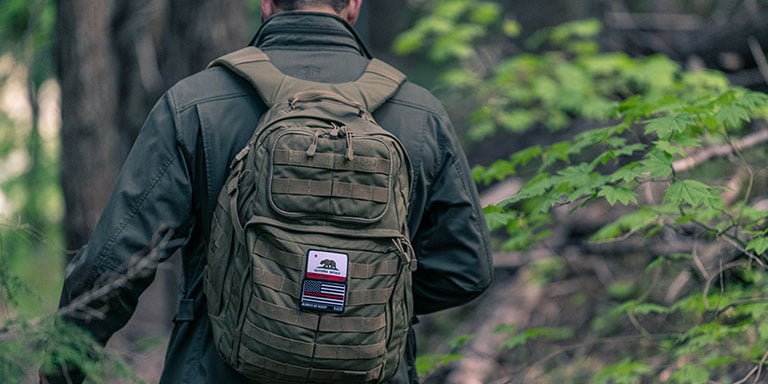When nature turns unpredictable, the difference between risk and readiness is the quality of your gear. Whether you’re a weekend hiker, an avid hunter, or someone preparing for emergencies, assembling a functional outdoor survival kit is essential. But it’s not just about throwing tools into a backpack; it’s about making wise, strategic choices.
Let’s walk through how to create a survival kit that’s practical, lightweight, and ready for the unexpected.
1. Navigation and Communication: Know Where You Are at All Times
When you’re deep in the wilderness, having a clear sense of direction is as critical as having food or shelter. The ability to navigate unfamiliar terrain and to communicate in case of emergency can dramatically increase your chances of survival. Even the most experienced adventurers can lose their bearings, especially when weather conditions or natural landmarks change rapidly.
Every well-prepared survival kit should include the following navigation and communication tools:
- A detailed topographic map of the area you’re exploring
- A magnetic compass or a reliable GPS device with offline capability
- Signal tools such as a high-decibel whistle or a reflective mirror
- An emergency radio or satellite communicator to reach help when cell service is unavailable
These tools don’t just keep you on track—they give you the power to make informed decisions under pressure, avoid unnecessary risks, and stay connected in critical moments. Failing to include even one of these essentials could leave you stranded and vulnerable. Don’t take the chance, prepare wisely, and always plan for the unexpected.
2. Clothing and Hand Protection: Gear Up for Harsh Environments
Clothing plays a pivotal role in thermoregulation and injury prevention. In unpredictable weather or rugged terrain, your outfit becomes your armor.
A key item often missed by beginners is a high-performance pair of camouflage gloves. These gloves serve multiple purposes: they protect hands from environmental hazards, offer grip during climbing or tool use, and help maintain a low profile in wooded or hunting environments. Moreover, they act as an essential thermal barrier in colder climates.
Opt for gloves made from breathable, water-resistant materials that still allow for tactile sensitivity.
3. Emergency Shelter and Heat Management
Exposure is one of the top threats in a survival situation, often even more dangerous than hunger or thirst. When temperatures drop or the weather turns unexpectedly, having reliable shelter and the ability to maintain body heat becomes a literal lifesaver. Even a brief period without protection can lead to hypothermia, exhaustion, or worse.
Be sure your survival kit includes these essential shelter and warmth solutions:
- An ultralight tarp or bivvy sack for quick and portable shelter
- A compact sleeping bag or thermal blanket to conserve body heat during rest
- Fire-starting tools like stormproof matches, a lighter, or ferro rods for ignition in any weather
- Emergency heat packs to generate instant warmth in cold conditions
A dependable shelter system protects you from wind, rain, and cold, while also offering a mental boost by providing a sense of safety and control. It’s not just about staying warm—it’s about creating a stable environment where your body can rest, recover, and recharge for the challenges ahead.
4. Food and Hydration: Sustaining Energy in the Wild
When you’re out in the wild, your body becomes your most excellent tool, and keeping it fueled is non-negotiable. Food and clean water are the core of endurance, mental clarity, and decision-making during a survival scenario. Without proper nourishment and hydration, even the most advanced gear becomes useless.
Your survival kit should always include compact, high-efficiency options such as:
- High-calorie nutrition bars or freeze-dried meals that require minimal prep and deliver sustained energy
- Water purification tools like portable filters, UV pens, or purification tablets to make natural water sources safe to drink
- A refillable water bladder or collapsible bottle to ensure hydration on the go
- A lightweight stove or compact heat source to prepare food and boil water if necessary
Keep your food items lightweight yet nutrient-dense, and never rely on natural water sources being safe; even crystal-clear mountain streams can harbor harmful bacteria or parasites. By prioritizing efficient, portable nutrition and water purification, you’re ensuring your body can go the distance when it matters most.
5. Performance Support: Maximize Endurance and Recovery
Prolonged exposure to harsh conditions takes a toll on the body. Enhancing your physical endurance with wearable gear can give you a crucial edge.
Wearing a body compression suit helps optimize blood circulation, reduce muscle fatigue, and provide postural support. Whether you’re trekking uphill or crawling through confined spaces, compression garments help reduce the risk of injury and enhance recovery times. For survivalists, that performance edge could be a lifesaver.
Conclusion:
Building the ultimate survival kit is about more than just assembling tools—it’s about strategic thinking. Choose items that serve multiple purposes, prioritize weight-efficiency, and always tailor your kit to the climate and environment you expect.
Above all, don’t underestimate the value of details: the right pair of gloves or a supportive garment could end up being the most essential items in your pack.




